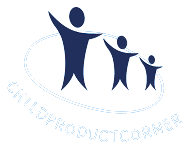Introduction
In today’s dynamic and complex world, organizations are more than just entities for profit-making. They have the power to drive meaningful change and make a lasting impact on society. However, becoming an effective organization that makes a difference requires strategic planning, strong leadership, and a culture of continuous improvement. Here’s how organizations can achieve this noble goal.
1. Define a Clear Mission and Vision
An effective organization starts with a clear mission and vision. These foundational elements provide direction and purpose, guiding all actions and decisions. The mission should articulate the organization’s core purpose and the impact it aims to achieve, while the vision legacyplus should paint a picture of the future the organization seeks to create.
Action Steps:
- Involve key stakeholders in the development of mission and vision statements.
- Ensure these statements are communicated clearly and consistently throughout the organization.
- Regularly revisit and, if necessary, refine these statements to remain relevant in a changing environment.
2. Cultivate Strong Leadership
Leadership plays a crucial role in shaping the culture and effectiveness of an organization. Effective leaders inspire and motivate their teams, drive strategic initiatives, and embody the organization’s values.
Action Steps:
- Invest in leadership development programs to build the skills and capabilities of current and future leaders.
- Encourage a leadership style that is inclusive, empathetic, and aligned with the organization’s mission.
- Foster a culture of accountability where leaders are responsible for their actions and outcomes.
3. Engage and Empower Employees
Employees are the backbone of any organization. Engaged and empowered employees are more likely to be productive, innovative, and committed to the organization’s goals.
Action Steps:
- Create a positive and inclusive workplace culture where employees feel valued and respected.
- Provide opportunities for professional growth and development.
- Encourage open communication and feedback to ensure employees feel heard and involved in decision-making.
4. Implement Effective Strategies and Processes
Strategic planning and efficient processes are essential for organizational effectiveness. Organizations need to set clear goals, develop actionable plans, and establish metrics to track progress.
Action Steps:
- Conduct a thorough analysis of the internal and external environment to inform strategic planning.
- Develop clear, measurable goals and actionable plans to achieve them.
- Regularly review and adjust strategies and processes based on performance data and changing circumstances.
5. Foster Innovation and Adaptability
In a rapidly changing world, organizations must be able to innovate and adapt to remain effective. This requires a culture that encourages creativity, experimentation, and learning from failure.
Action Steps:
- Encourage a mindset of continuous improvement and openness to new ideas.
- Provide resources and support for research and development initiatives.
- Create an environment where failure is seen as a learning opportunity rather than a setback.
6. Build Strong Relationships and Partnerships
Collaboration with external stakeholders, including customers, suppliers, and community organizations, can amplify the impact of an organization’s efforts.
Action Steps:
- Identify and engage with key stakeholders who share the organization’s vision and goals.
- Build mutually beneficial partnerships that leverage the strengths of each party.
- Maintain transparent and open communication with stakeholders to build trust and collaboration.
Becoming an effective organization that makes a difference in the world is a continuous journey. It requires a clear mission, strong leadership, engaged employees, effective strategies, a culture of innovation, and strong partnerships. By focusing on these key areas, organizations can not only achieve their goals but also contribute to a better world.
